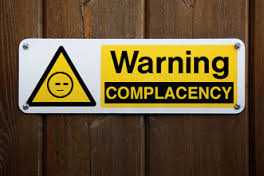 “By seizing the opportunities that disruption presents and leveraging hard times into greater success through out-innovating, out-thinking, and out-working everyone around you, this just might be the richest time of your life so far.” —Robin S. Sharma
“By seizing the opportunities that disruption presents and leveraging hard times into greater success through out-innovating, out-thinking, and out-working everyone around you, this just might be the richest time of your life so far.” —Robin S. Sharma
Historically the word ‘disruption’ has had a negative connotation. But, in this day and age, disruption is the driving force behind success. So, what makes disruption positive?
Shakes up the status quo
Disruption shakes up the status quo. It forces us to reevaluate the way we have been doing things and even the goals we are trying to achieve. The status quo keeps us stuck where we are; disruption can give us the push we need to get moving forward again.
Piques curiosity
Disruption shocks us out of our slumber. We can no longer operate on autopilot; we begin to be curious about what is and what could be. It’s this curiosity that leads us to explore new ideas, products, and processes. Curiosity is a key component to success and disruption is a great reminder.
Forces out-of-the-box thinking
Disruption can serve as a yield sign, signaling that there may be a better way. Stop using the same thinking that got you this far, step outside the box and see what great ideas you might find there. When everyone else is operating inside the box, disruption can be the catapult that sends you in an uncharted direction.
Improves adaptability
Learning to embrace and capitalize on disruption improves our adaptability. Things never go exactly as planned. Disruption keeps us agile; we no longer get thrown off course every time we encounter a disrupting event.
Seize the Opportunity
As Robin S. Sharma emphasized in the quote at the beginning of this article, disruption can help you to out-innovate, out-think, and out-work those around you. This is the key to success. So, seize the opportunity. Let disruption shake up the status quo, pique curiosity, force out-of-the–box thinking, and improve adaptability. In the encouraging words of Robin S. Sharma, “…this might just be the richest time of your life so far.”
© 2016 Elizabeth Stincelli
Liz Stincelli is passionate about recognizing and inspiring the leader in each of us. She is the Founder of Stincelli Advisors where she focuses on helping organizations change attitudes, change communication dynamics, improve collaboration and problem-solving, engage employees, and strengthen organizational culture. Liz holds a Doctor of Management degree with an emphasis on organizational leadership.
Learn more about Liz by visiting her website, stincelliadvisors.com and connect with her on Twitter @infinitestin, Google+, and LinkedIn. You can contact her by email at stincelliadvisors@gmail.com.







